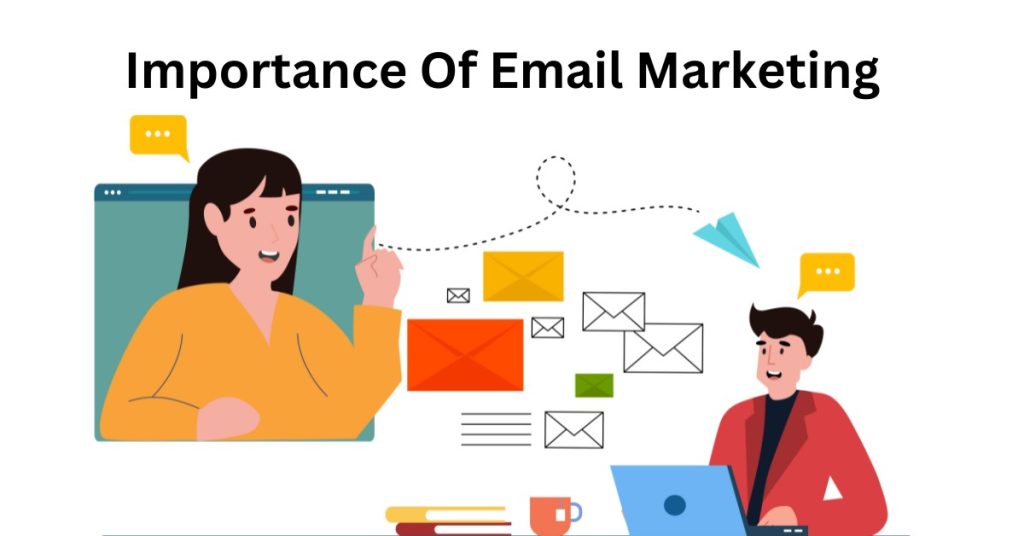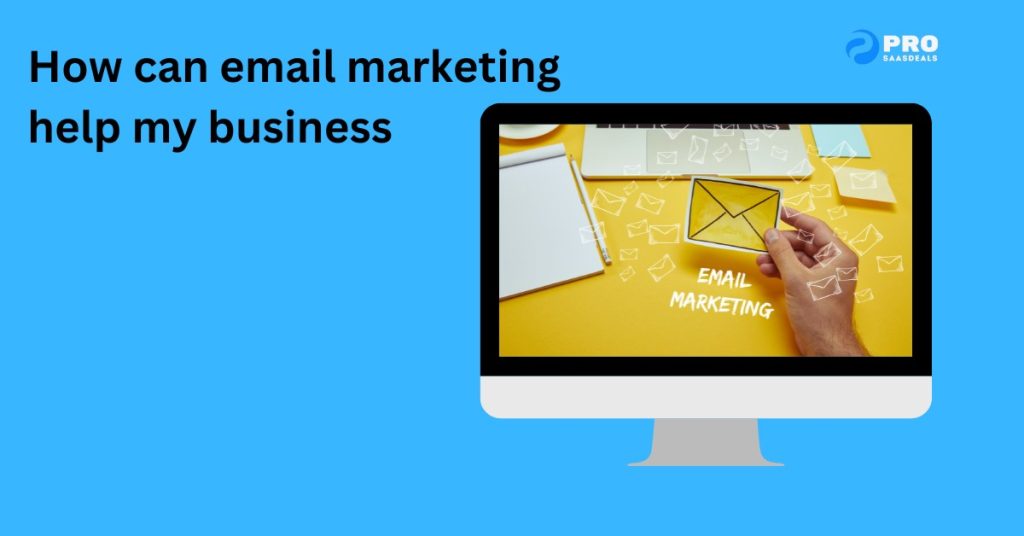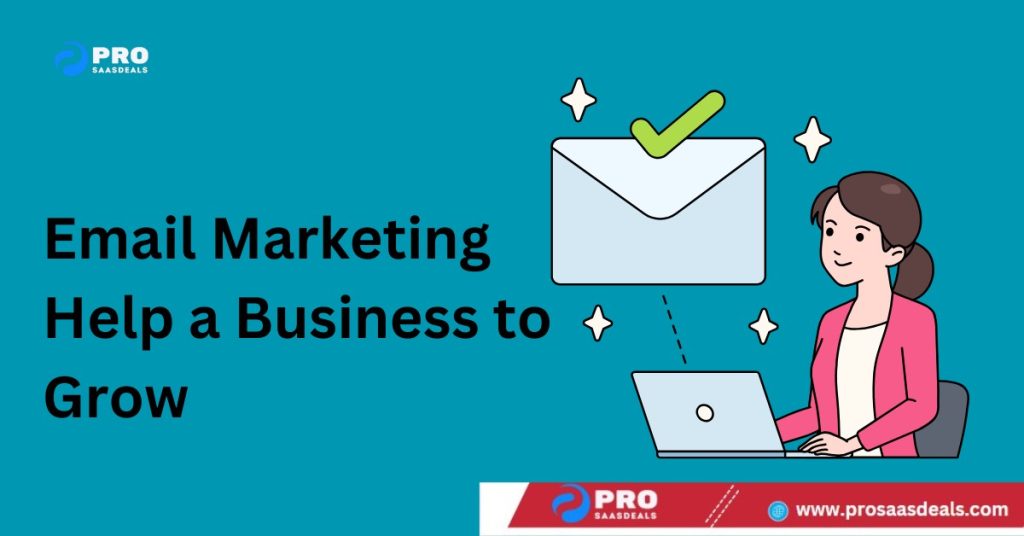Email marketing can help a business grow in many ways. It reaches customers directly and builds relationships.
In today’s digital world, email marketing is a powerful tool. Businesses use it to connect with their audience. It is cost-effective and provides a high return on investment. Small and large companies benefit from its reach. With email marketing, businesses can share updates, promote products, and engage customers.
This direct communication helps build trust. Over time, it can lead to increased sales and customer loyalty. Understanding how to use email marketing effectively can make a big difference. In this blog, we will explore the various ways email marketing can support business growth and success.
Introduction To Email Marketing
Email marketing is a powerful tool for businesses. It helps connect with customers directly. This section introduces email marketing and its importance.
What Is Email Marketing?
Email marketing involves sending emails to customers. These emails can promote products, share news, or build relationships. Businesses use email marketing to reach a large audience quickly.
Emails can be personalized. This makes customers feel valued. Email marketing is cost-effective and measurable. You can track how many people open and read your emails.
Importance Of Email Marketing
Email marketing has many benefits for businesses.
- Increases Sales: Emails can promote new products and discounts.
- Builds Relationships: Regular emails keep customers engaged.
- Cost-Effective: Email marketing is cheaper than traditional ads.
- Measurable: You can track email performance easily.
- Targeted: Emails can be personalized for each customer.
Email marketing also helps in customer retention. Engaged customers are more likely to return. It also enhances brand awareness. Regular emails keep your brand in customers’ minds.
Effective email marketing can lead to business growth. It helps in reaching more customers and increasing sales.
Building An Email List
Building an email list is essential for any business. It allows direct communication with potential customers. This can lead to increased sales and customer loyalty. An email list helps in delivering personalized content. It also enables businesses to inform customers about new products and offers. Let’s explore how to build an effective email list.
Collecting Email Addresses
Collecting email addresses is the first step in building an email list. There are several ways to do this:
- Website Visitors: Encourage visitors to subscribe to your newsletter.
- Social Media: Promote your email sign-up form on social media platforms.
- Events: Collect emails during webinars, trade shows, or local events.
- In-Store: Ask for email addresses at the point of sale.
By using these methods, you can gather a large number of email addresses. This will help in creating a robust email list.
Using Sign-up Forms
Using sign-up forms is an effective way to collect email addresses. A sign-up form can be placed on various parts of your website. Here are some tips:
- Homepage: Place a sign-up form on your homepage to grab attention.
- Blog Posts: Embed sign-up forms within blog posts to engage readers.
- Pop-Ups: Use pop-up forms to capture emails at strategic moments.
Ensure that your sign-up forms are simple and easy to fill out. Ask only for essential information like name and email address. This will increase the chances of visitors completing the form. You can also offer an incentive, such as a discount or a freebie, to encourage sign-ups.
Here is a sample HTML code for a simple sign-up form:
By integrating sign-up forms, you can effectively collect email addresses. This will help in growing your email list and, ultimately, your business.

Segmenting Your Audience
Email marketing is a powerful tool. But how do you make it even more effective? By segmenting your audience. This process involves dividing your email list into smaller groups. Each group has unique traits or behaviors. The result? More personalized and relevant emails. Let’s dive into the benefits and types of segmentation.
Benefits Of Segmentation
Higher Engagement Rates: Targeted emails resonate more with recipients. They are more likely to open and click.
Increased Revenue: Personalized offers can lead to higher sales. When customers see relevant products, they are more likely to buy.
Better Customer Retention: Tailored content keeps your audience engaged. Happy customers stay longer.
Improved Deliverability: Sending relevant content reduces spam complaints. This improves your sender reputation.
Types Of Segmentation
There are several ways to segment your audience. Here are some common methods:
- Demographic Segmentation: Age, gender, income level, and education.
- Geographic Segmentation: Location, climate, and cultural preferences.
- Behavioral Segmentation: Purchase history, email engagement, and website activity.
- Psychographic Segmentation: Interests, lifestyle, and values.
Segmenting your audience can transform your email marketing strategy. It ensures your messages are relevant and engaging. Start with simple segments and refine over time.

Crafting Effective Emails
Crafting effective emails is crucial for the success of any email marketing campaign. Well-crafted emails can engage your audience and drive actions. To achieve this, focus on writing compelling subject lines and creating engaging content. Let’s dive into these essential aspects.
Writing Compelling Subject Lines
The subject line is the first thing your audience sees. It determines whether they will open your email. To create a compelling subject line, keep it short and to the point. Use strong, action-oriented words and personalize it when possible. Here are some tips:
- Keep it under 50 characters: Short subject lines are easier to read.
- Use action verbs: Encourage immediate action.
- Personalize: Include the recipient’s name or specific details.
- Create urgency: Use words like “now” or “limited time.”
Creating Engaging Content
The content of your email should be engaging and relevant to your audience. Start with a strong opening that hooks the reader. Use clear and simple language. Break up the text with bullet points, images, and short paragraphs. Here are some key points:
- Start with a strong opening: Capture attention right away.
- Use clear language: Keep your sentences short and simple.
- Include visuals: Images and videos can make your content more engaging.
- Use bullet points: Make the content easy to scan.
- Include a call-to-action: Tell your readers what to do next.
By focusing on these aspects, you can create emails that not only capture attention but also drive action. This will help your business grow through effective email marketing.
Personalization Techniques
Email marketing can greatly aid business growth through effective personalization techniques. These techniques involve tailoring emails to suit individual preferences and behaviors. Personalization makes customers feel valued and understood, leading to higher engagement and conversion rates.
Using Customer Data
Customer data is crucial for email personalization. Collect data from various sources like website activity, purchase history, and social media interactions. This information helps create detailed customer profiles. Use these profiles to send targeted emails.
For instance, if a customer browsed a product on your site, send them an email with more details about that product. This shows you are attentive to their interests. Personalized recommendations based on past purchases also work well. They can increase repeat purchases and customer loyalty.
Complete Your Research on the Product Page
Dynamic Content
Dynamic content refers to email elements that change based on the recipient’s data. This can include personalized images, product recommendations, or special offers. By using dynamic content, each recipient gets an email that feels tailored specifically for them.
For example, if a customer often buys sports gear, include sports-related content in their emails. If another customer prefers electronics, their email should feature the latest gadgets. Dynamic content makes each email more relevant and engaging to the recipient.
Automation In Email Marketing
Automation in email marketing can significantly help a business grow. It saves time, enhances engagement, and increases efficiency. Automated emails allow businesses to send the right message at the right time. This personalized approach can lead to higher conversion rates and stronger customer relationships.
Welcome Series
A welcome series is an automated sequence of emails sent to new subscribers. It introduces them to your brand and sets expectations. The first email can thank them for subscribing. The following emails can provide valuable information about your products or services. This strategy can create a positive first impression. It also helps build trust and loyalty.
Drip Campaigns
Drip campaigns are a series of pre-written emails sent over a specific period. They are triggered by user actions or specific dates. For example, an abandoned cart email can remind customers to complete their purchase. Educational emails can provide helpful tips related to your products. These campaigns keep your audience engaged. They also encourage them to take action, such as making a purchase.
Analyzing Performance
Analyzing the performance of your email marketing campaigns is crucial for business growth. Knowing what works and what does not can help you refine strategies. This section covers key metrics to track and the use of analytics tools.
Key Metrics To Track
To understand the success of your email marketing, focus on these key metrics:
- Open Rate: The percentage of recipients who open your email. A higher rate means your subject lines are effective.
- Click-Through Rate (CTR): The percentage of recipients who click on links within your email. This shows how engaging your content is.
- Conversion Rate: The percentage of recipients who complete a desired action, like making a purchase. This metric ties directly to revenue.
- Bounce Rate: The percentage of emails that could not be delivered. A high bounce rate indicates issues with your email list.
- Unsubscribe Rate: The percentage of recipients who opt-out from your email list. A high rate can signal that your content is not meeting expectations.
Using Analytics Tools
Several tools can help you analyze the performance of your email marketing campaigns:
| Tool | Features |
|---|---|
| Google Analytics | Tracks traffic from email campaigns to your website. Provides insights into user behavior. |
| Mailchimp | Offers detailed reports on open rates, click rates, and conversions. Allows A/B testing. |
| HubSpot | Provides real-time analytics. Integrates with CRM for detailed customer insights. |
Using these tools can give you a clear picture of how your campaigns are performing. Optimize your strategies based on data to achieve better results.
Compliance And Best Practices
Email marketing is a powerful tool for businesses. But it is vital to follow the right rules and best practices. Compliance ensures that your emails reach the right people. It also helps to avoid penalties and builds trust with your audience.
Understanding Gdpr
The General Data Protection Regulation (GDPR) sets strict rules for email marketing. It protects the privacy of individuals in the EU. Companies must get consent before sending marketing emails. This means users must opt-in to receive your emails. They should know what they are signing up for and how their data will be used.
Businesses must also keep records of consent. This ensures they can prove compliance if needed. It is important to include a clear unsubscribe option in every email. This allows users to opt-out easily.
Avoiding Spam Filters
Many emails end up in spam folders. To avoid this, follow these best practices:
- Use a recognizable sender name and email address.
- Avoid using trigger words like “free,” “buy now,” or “urgent.”
- Keep your subject lines clear and honest.
- Make sure your email content is relevant and valuable.
Also, keep your mailing list clean. Remove inactive subscribers regularly. Use a double opt-in process to ensure that only interested users receive your emails.
| Best Practice | Reason |
|---|---|
| Use a recognizable sender name | Builds trust and recognition |
| Avoid trigger words | Reduces the chance of being marked as spam |
| Keep subject lines clear | Improves open rates |
| Provide valuable content | Engages the audience |
Following these compliance and best practices ensures a successful email marketing strategy. It helps build a strong relationship with your audience and supports the growth of your business.
Case Studies
Email marketing can significantly boost business growth. It offers a direct way to reach customers and build relationships. To illustrate its effectiveness, let’s explore some real-world examples. These case studies highlight how businesses have successfully used email marketing. We’ll also discuss the lessons learned from their experiences.
Success Stories
Many businesses have seen remarkable results with email marketing. Here are a few success stories that stand out:
- Company A: A small e-commerce store increased sales by 30% in just three months. They achieved this by segmenting their email list and sending personalized product recommendations.
- Company B: A software company doubled its customer retention rate. They did this by sending helpful tips and tutorials to their users regularly.
- Company C: A local restaurant saw a 20% rise in reservations. They offered exclusive discounts to their email subscribers.
Complete Your Research on the Product Page
Lessons Learned
These case studies offer valuable insights. Here are some key lessons learned:
- Segmentation: Dividing your email list into smaller groups can boost engagement.
- Personalization: Tailoring emails to individual preferences increases customer satisfaction.
- Consistency: Regularly sending emails keeps your audience engaged and informed.
- Value: Offering valuable content or discounts encourages loyalty and repeat business.
By studying these examples, businesses can understand the power of email marketing. Implementing these strategies can lead to significant growth and success.

Frequently Asked Questions
What Is Email Marketing?
Email marketing is a digital strategy where businesses send emails to prospects and customers. It’s used to promote products or services and build relationships.
How Does Email Marketing Boost Sales?
Email marketing boosts sales by directly reaching potential customers with personalized offers. It encourages engagement, leading to higher conversion rates.
Why Is Email Marketing Cost-effective?
Email marketing is cost-effective because it requires minimal investment. It leverages existing customer data for targeted campaigns, reducing overall marketing costs.
Can Email Marketing Improve Customer Loyalty?
Yes, email marketing improves customer loyalty by providing valuable content. Regular updates and personalized messages help maintain a strong relationship with customers.
Conclusion
Email marketing can significantly boost business growth. It builds customer relationships. Engages your audience effectively. Drives traffic to your website. Enhances brand awareness. Converts leads into sales. Provides valuable insights through analytics. Cost-effective and easy to implement. Personalizes communication with customers.
Encourages repeat business. Increases customer loyalty. Incorporate email marketing to see measurable results. Focus on clear, concise messages. Consistent efforts will yield positive outcomes. Email marketing is an essential tool for any business. Start today and watch your business grow.

